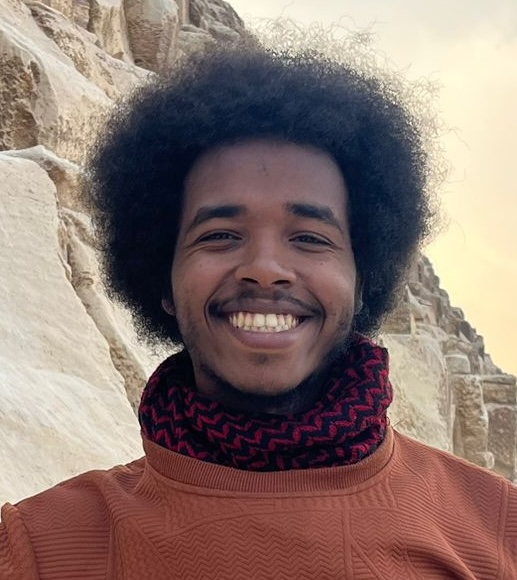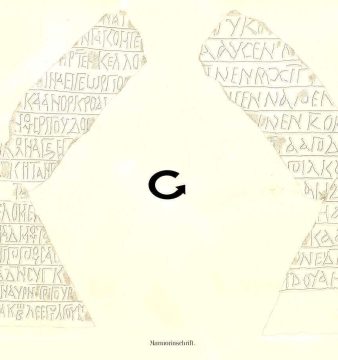Rethinking Nubian: How One Word Replaced Ancient Divides
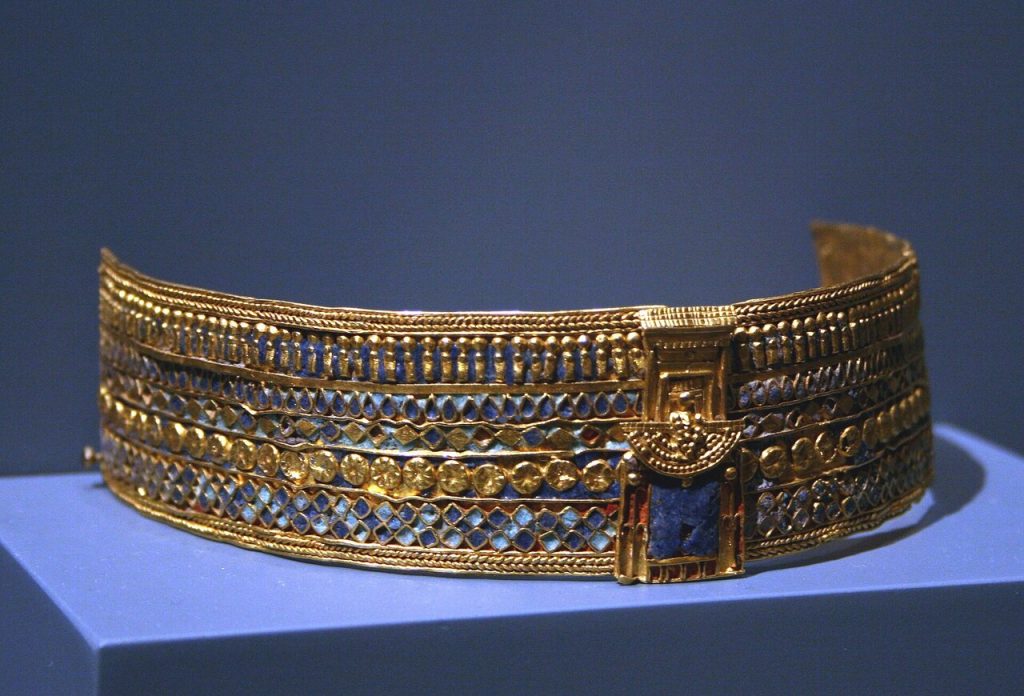
Shrouded collar of Kushite queen Amanishakheto in the Ägyptisches Museum Berlin. Credit: Sven-Steffen Arndt, Creative Commons
It is often believed that the term ‘Nubian’ is rooted in the Ancient Egyptian word for ‘gold.’ This lines up with our modern-day, romantic image of ancient Nubia as a place of wealth and royalty.
However, since 2008, scholars have come to agree on a much darker theory: the name Nubia, and its Arabic relative Nuba, come from an ancient Meroitic word meaning ‘slave.’
If this is the case, how did the term come to be a source of pride for Nubians and non-Nubian Sudanese alike?
The term Nubian’s shift from a derogatory term to a prestigious one is the result of the complex history of language in politics in the Nile Valley. By understanding this history, we come to see that identity is not fixed, but is rather shaped by centuries of history.
Defining ‘Nubian’

Credit: Vincent van Gerven Oei, Creative Commons
There are three ways we can use the term ‘Nubian’:
- Geographically, to mean the land between Aswan, Egypt and Dongola, Sudan.
- Linguistically, to mean speakers of what linguists classify as Nubian languages.
- Ethnically, to refer to the Nubian language speakers in geographic Nubia.
While the kingdoms of Kush and their Christian Nubian successors tend to be lumped together as ‘Nubian,’ the kingdoms of Kush were only geographically Nubian, in reality. Linguistically, the Kushites spoke their own language, Meroitic, which is only distantly related to the Nubian language family by being a part of the larger Eastern Sudanic grouping. This is similar to how Arabic and Amharic, for example, are different languages while still being a part of the Semitic group. Ancient Kushites probably couldn’t understand Nubian, and ancient Nubians probably couldn’t understand Meroitic, although further study shows the languages have a historical connection.
It wasn’t until the time of Christian Nubian kingdoms in the 6th-century CE that we find clear evidence of people writing in Nubian languages. These included the languages of Old Nubian and Old Dongolawi, the ancestors of the modern Nobiin and Andaandi languages used in Sudan and Egypt today.
Kwesh vs Noba: Conflict in Ancient Nubia
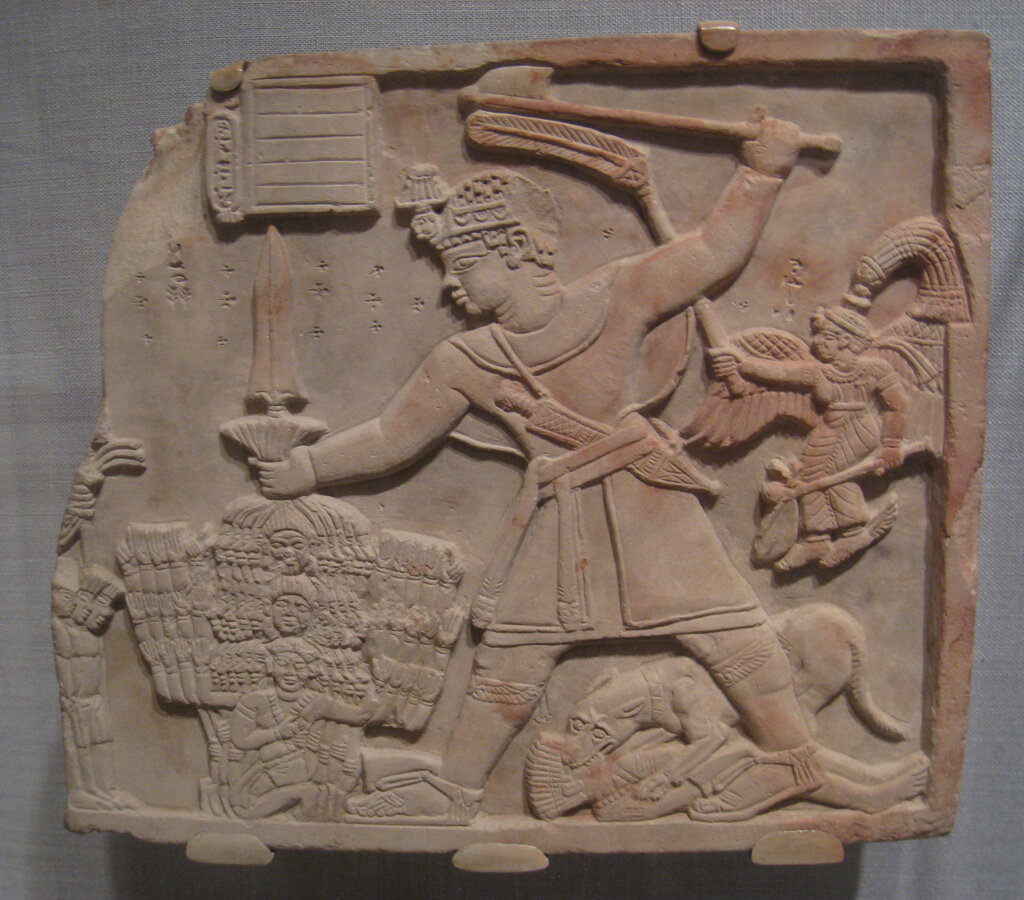
Kushite prince Arikankharer defeats his foes. Credit: Daderot, Public Domain
During the period of Kushite rule in ancient Nubia between 1069 BCE and 350 CE, the rulers of Kush would refer to themselves as qes, pronounced ‘Kwesh.’ While the Kwesh were one of the early African superpowers, they soon found themselves in conflict with a group of people they called the Makhu, who had their own kings.
In his article, ‘Language and Ethnicity in Ancient Sudan,’ French Meroitic scholar Claude Rilly takes notice of the fact the term ‘Makhu’ disappears from later Meroitic writings. Instead, the Kwesh record conflicts with a group they call the nob, pronounced ‘Noba.’ Meroitic writings associate them with the west, also noting they had their own kings and chiefs, who are depicted in Kwesh art as prisoners, reflecting their conflict with Kush. This lines up with ancient Greek descriptions of Megabaroi and Noubai people living outside of Meroitic control.
Based on the similarity between the Greek names Megabaroi and Noubai, compared to the Meroitic Makhu abar (Makhu man) and Noba (Nubian), Rilly concludes the Greek picked up these terms from Meroitic names for the first Nubian language speakers.
Rilly bases this on the fact that the Makhu and Noba were associated with the land west of the Nile, which most linguists now believe is where the Nubian languages originated. In addition to Rilly, experts like Polish historian Artur Obluski and Nubian linguist Muhammad Jalal Hashim argue that these Makhu/Noba migrated to today’s geographic Nubia, eventually overthrowing the Kushite state.
Meaning of the Term ‘Noba’
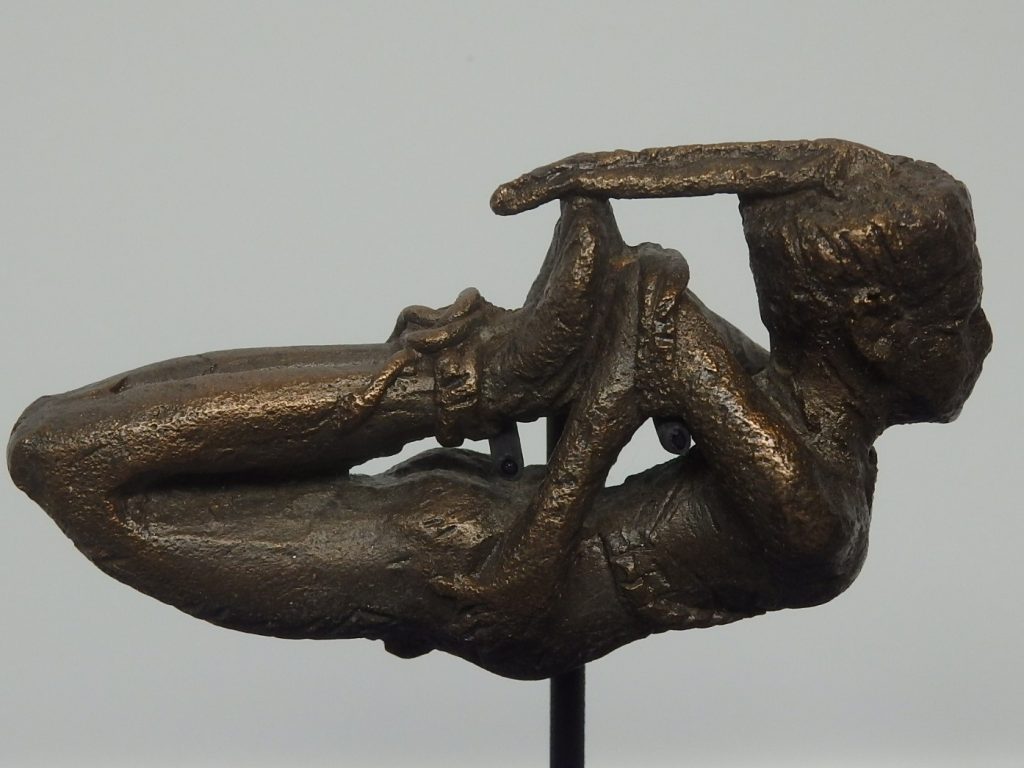
A statue of a bound prisoner reading ‘This is the King of the Noba’ in Meroitic. Rilly carefully studies this inscription in his article, ‘Enemy Brothers.’ Credit: Herman Junghans, Creative Commons
It’s not hard to see how the Meroitic term Noba became the Greek Noubai. Where Rilly’s theory becomes difficult, however, is in the meaning he gives to the term Noba. In ‘Enemy Brothers,’ Rilly references the fact that, 20th-century Nubian-language dictionaries, Andaandi speakers use nob to mean ‘slave,’ while the plural form Nobii is associated with the Nobiin-speaking Fadicca, Halfaween, Sikkot, and Mahas. By contrast, Nobiin speakers refer to Andaandi speakers as Ooshkirii: slave traders.
If the Meroitic term had the same derogatory meaning as the 20th-century Nubian term, it would explain why early Meroitic writings use the term ‘Makhu,’ then alternate between speaking of ‘Makhu’ and ‘Noba,’ before speaking of Noba exclusively. The Kwesh would capture and enslave warring Makhu, making them Noba. As time went on, these conflicts became so frequent that only the derogatory term would be used, explaining why Greeks would pick up the term Noubai.
It would also make the singular form Nobata cognate with the Andaandi Nubian term Nugud, consistent with a pattern of Nubian ‘g’ sounds becoming ‘b’ sounds in some Eastern Sudanic languages.
That said, however, not all experts are convinced by this explanation. In his lecture ‘Civilizational, Cultural, and Linguistic Origins in Sudan,’ Hashim defines the term ‘Noba’ as meaning ‘black.’ Nubian linguist Nubantood Khalil, in his Nobiin-learning textbook Nobiinga Kullan! also gives the same definition, although neither elaborate on their reasoning.
In all cases, however, it is clear that the term Noba is not related to the Ancient Egyptian word for gold. This root, nbr, instead appears as nabara in Meroitic, becoming nabra/nobre in modern Nubian languages.
Nubian identity in the Christian-era
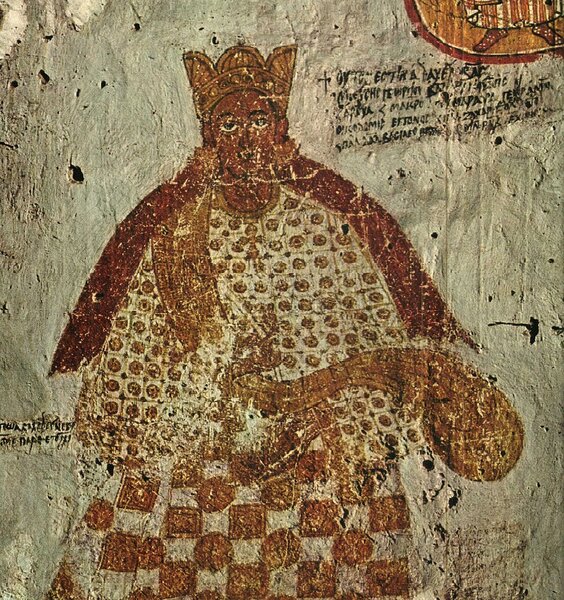
Christian Nubian king Mouses Georgi, who ruled over the entirety of Christian Nubia in the 12th-century.
Credit: Georg Gester, Public Domain
After the fall of Kush in the 4th-century, Ethiopian King Ezana describes the region as being inhabited by ‘Black Noba’ and ‘Red Noba.’ Scholars see this description, along with the fact that Nubian languages dominated in writing after the 4th-century, as evidence that the Makhu/Noba took over geographic Nubia after the collapse of Meroe, spreading their languages. Scholars like Hashim say that, during this time, the Kushite population was assimilated into Nubian-speaking society, leaving a mark on Nubian languages and traditions.
Despite the Meroitic linguistic legacy, however, the Nubian-speaking Christian kingdoms of Nobatia, Makuria, and Alodia that followed Kush would use Greek and Old Nubian as written languages. Here, we start to see the beginning of geographic Nubians using terms related to Meroitic Noba for themselves. When writing in Greek, the people of Nobadia would call themselves Nobadion, Noubades, or Noubos. Sudanese historian Yusuf Fadl Hassan, in his seminal book The Arabs and the Sudan, also points out that this is where we see Arab geographers start using the term Nuba to refer to the people of these kingdoms.
By contrast, Adam Simmons shows in Nubia, Ethiopia, and the Crusading World that these kingdoms’ inhabitants – when writing in Old Nubian – would call themselves Migi (Greek Noubades), Makourt (Greek Makourrae), and Arouad (Greek Arouades). The term ngoba, related to Meroitic Noba, is only used in one document, where it seems to connote a particular social class, strengthening the idea the term had local associations with servitude.
This shows us that, while terms related to Meroitic Noba were becoming the most common way to refer to geographic Nubians in Greek and Arabic, Nubian-language speakers maintained local identities that more closely resemble the Meroitic term Makhu.
It is from here that we start to see Nob-based terms eclipse indigenous terms, which disappear after the fall of Christian Nubia.
Muslim Nubian identity

A 19th-century illustration of a village in Upper Nubia, as two residents pray in a simple mosque.
Credit: Pierre Tremaux, Public Domain
Based on the records we have from local historians such as Katib Al Shuna (The Granary Clerk) and Wad Dayf Allah, modern Sudanese tribal divisions had begun to emerge after the rise of Islamic Funj Sultanate in the 16th-century. They describe the Funj conquering the land after a period of Nuba rule, showing that the Arabic-speaking residents of the region had assimilated earlier Arabic vocabulary for the area.
These Arabic language documents from the 19th-century reflect the increasing dominance of Arabic post-Funj. During this time, due to economic and religious reasons, many people started to adopt Arabic instead of Nubian as their primary language. A prime example of this are the Mahas communities who left geographic Nubia during Funj rule, settling areas like Tuti and Al Gezira, where they developed a firm sense of Arab rather than Nubian identity by the 20th-century.
This process was not limited to Nubians, however; academics like Jay Spaulding have long argued that today’s Ja’aliyyin and Shawayga spoke a Nubian language during the time of the Funj. By contrast, today, they only speak Arabic, and identify as Arab, not Nubian. Despite this, Nubian influences are still visible in their colloquial vocabulary, evidence of their connection to Nubian languages’ previous dominance.
This shift towards Arabic continues until today, as more non-Arabic speaking communities are Arabicised due to economic and social pressure. Perhaps this could be part of the reason geographic Nubians began to identify themselves as one Nuba people, on one Nuba land, speaking one language, instead of old distinctions of Migi versus Makourt.
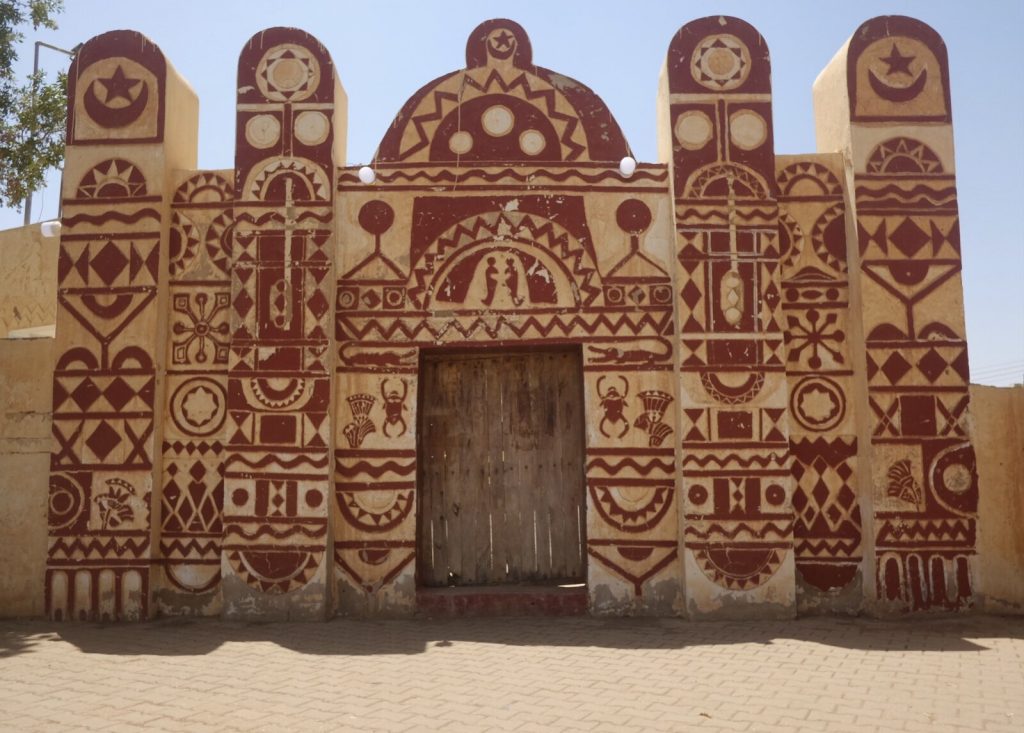
The entrance of the Nubian Club in Khartoum, Sudan, an organization dedicated to promoting Nubian culture and language, be it Nobiin or Andaandi. Credit: Ola Alsheikh, Creative Commons
Indeed, today, Nubians have no recollection of class-based divides between Nobiin and Andaandi speakers. Many are unaware that Nob means slave, and there is no living memory of Andaandi-speakers enslaving Nobiin-speakers, even if their language is still referred to as Ooshkir.
More frequently, however, you’ll find Nubians referring to both Nobiin and Andaandi speakers as Nuba, describing themselves in songs as ‘one body,’ transcending linguistic and national divides.
It’s worth noting that the vowel in the Nobiin-Andaandi Nuba differs from the vowel in 20th-century Nob, while perfectly matching the Arabic Nuba. Could it be the case that Muslim Nubians adopted a non-Nubian term as a neutral self-ascription, similar to how Christian Nubians adopted the Greek term Noubos?
These are questions requiring further systematic research into how Nubians identified in the pre-colonial Islamic period. For now, however, it suffices to say that the political distinctions – Kwesh vs Makhu, Makhu vs Noba, Migi vs Makourt, and even Nobii vs Oshkirii – have dissolved since the rise Islam and Arabic in the region.
Today, any negative or class-based connotations to the word ‘Nubian’ have been forgotten. In their place stands a united Nubian consciousness, defined by connection with the land, the use of Nubian languages, and the proud memory of Kushite and Christian Nubian history.
The journey of the term ‘Nubian,’ from a term used for enemies of Kush, to the main means of self-identification among Nubians today, reflects just how much the region has changed over nearly 3,000 years of history. This shows us that ethnic identities in Sudan are not unchanging: they shift as kingdoms rise and fall, languages come and go, and people move from place to place.
Despite all these shifts, however, the connection with the land, and the impact of this history on it, remain the same.
500WM Columnist Hatim Eujayl is a Sudanese-American writer involved in various projects to promote Sudanese culture. His most famous works include the Sounds of Sudan YouTube channel, the Geri Fai Omir Kickstarter, and the Sawarda Nubian font. More of his writing can be found on his Substack, ‘My Sudani-American LiFE,’ where he discusses Sudanese literature and cinema. He can be reached on Instagram @massintod or by email at arbaab@hatimeujayl.com

